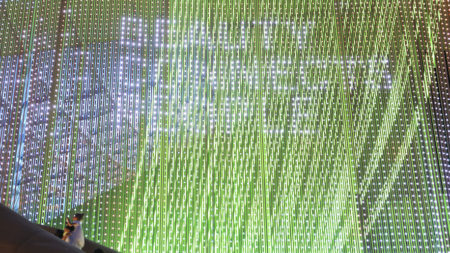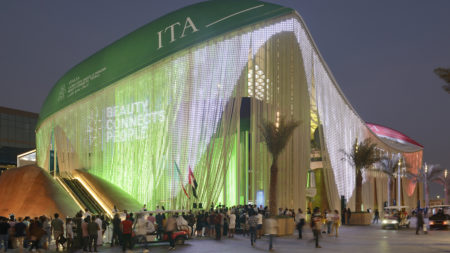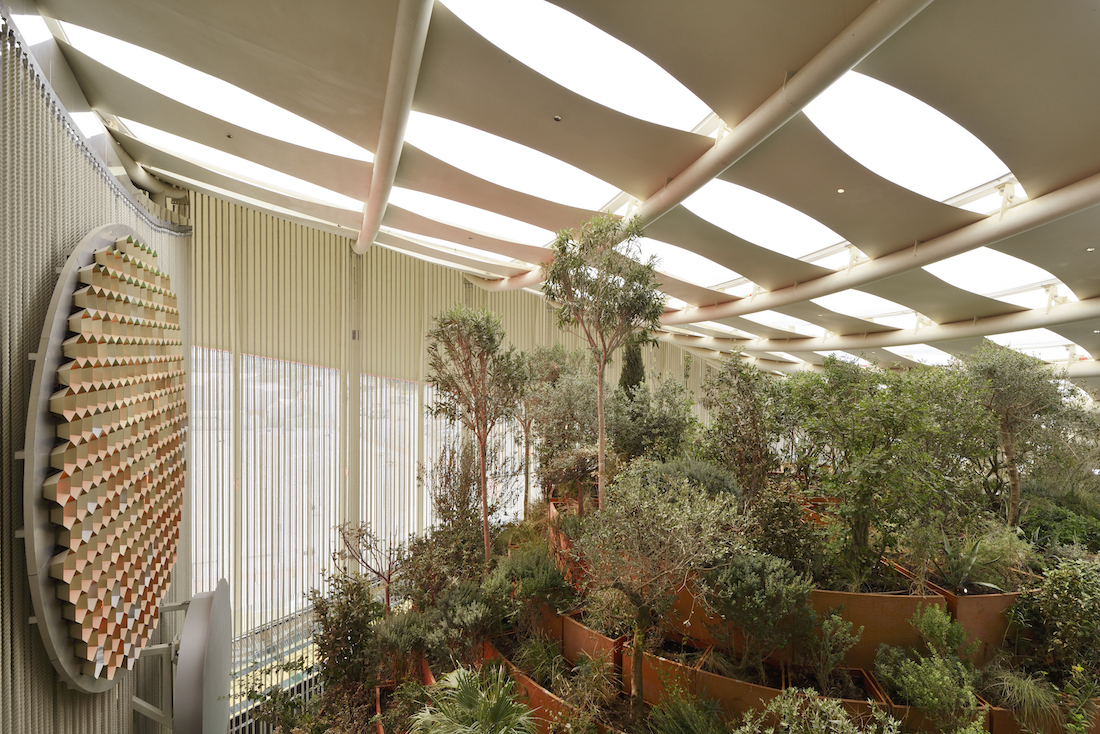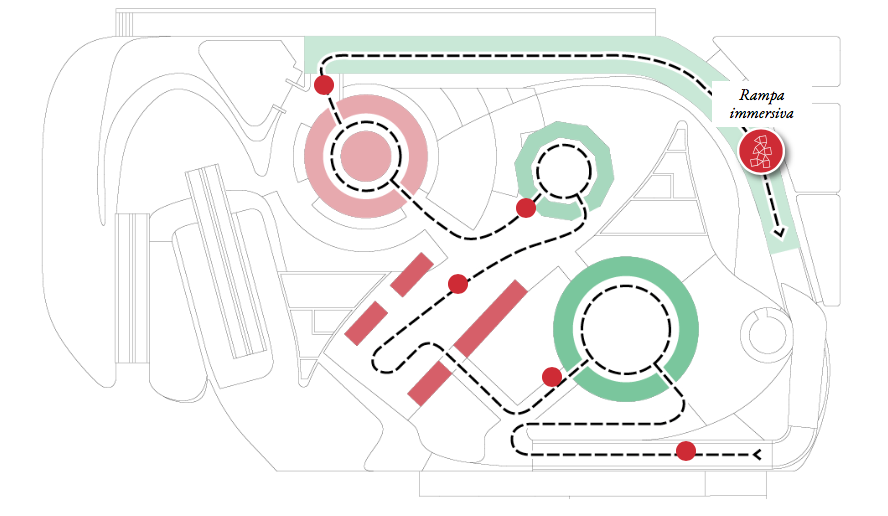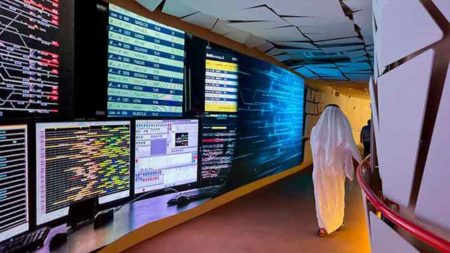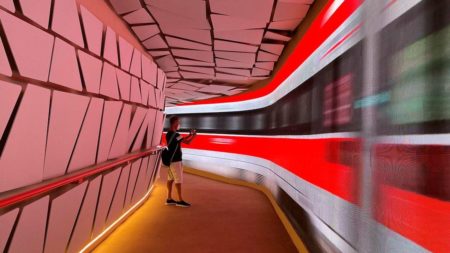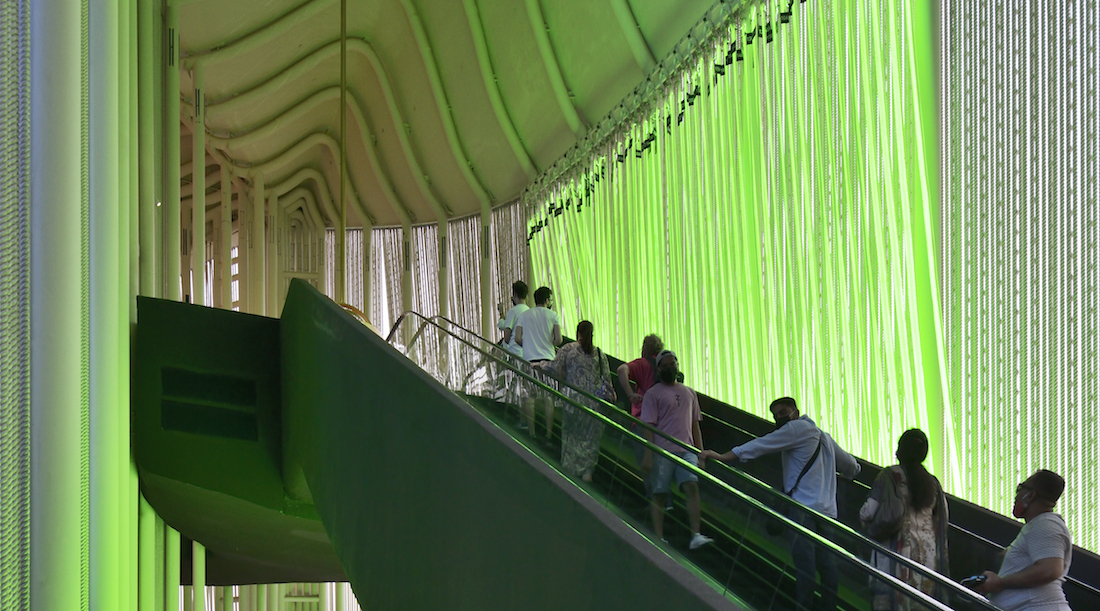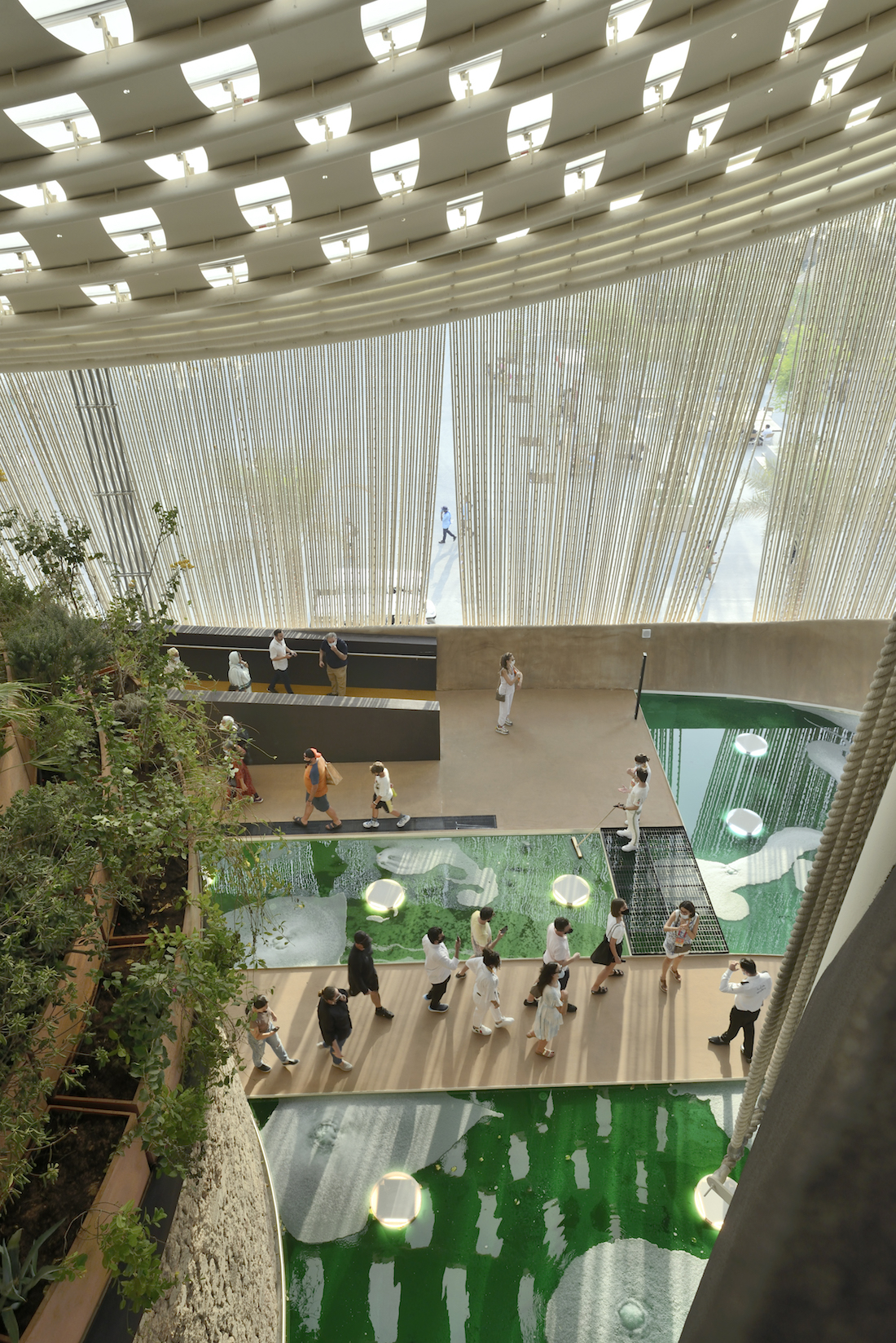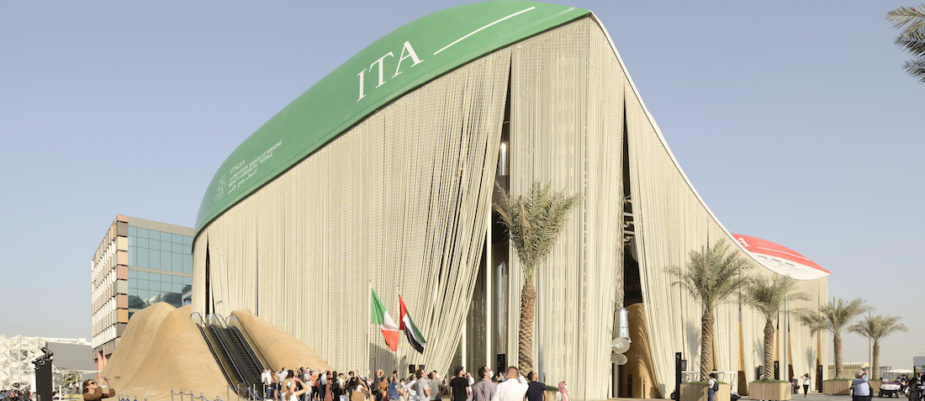
Three ship hulls form the roof of the structure, a multimedia facade made from 2 million recycled plastic bottles, and a natural system of climate mitigation rather than air conditioning.
The Italian Pavilion at Expo Dubai 2020 (designed by CRA-Carlo Ratti Associati and Italo Rota Building Office, with Matteo Gatto and F&M Ingegneria) represents an experiment for sustainability, reconfigurability and circular design.
The final stretch of the interior path offers visitors the unique experience of “listening to the Silence” thanks to the 800 Snowsound Flat sound-absorbing panels (designed by Alberto and Francesco Meda) by Caimi, Supporter Sponsor of the Italian Pavilion.
The project puts forward an all-encompassing vision for reconfigurable architecture and circular design involving some of Italy’s most innovative companies. The pavilion features a multimedia façade made with two million recycled plastic bottles, new types of building materials – from algae and coffee grounds to orange peels and sand – and an advanced system for climate mitigation that constitutes an alternative to air conditioning. Reusing is also fundamental to how the structure was conceived. The pavilion utilizes three real-sized boat hulls, which could potentially set sail after the event, to create and shape the roof of the building.
“Our design for the Italian Pavilion deals with what I believe is architecture’s most important challenge today: advancing the double convergence between the natural and the artificial. It anticipates issues and suggests strategies that will be increasingly crucial for the future of our cities as we address the consequences of the current climate crisis.The pavilion keeps mutating into different forms. It speaks about reconfigurability both in the long term, because of its circularity, and in the short term, thanks to its use of digital technologies.” says Carlo Ratti, founding partner of CRA practice and director of the MIT Senseable City Lab at the Massachusetts Institute of Technology (MIT).
The Padiglione Italia (over 38.000 square feet) has no conventional walls. Instead, a curtain facade made of nautical rope, which also incorporates LEDs that can be lit to transform the facade into a multimedia surface, delineates the exhibition space. The nautical ropes are produced in recycled plastic, using the equivalent of roughly two million bottles, and form an intricate vertical meshwork that stretches almost 70 kilometers (43,45 miles) in length. At the close of the Expo, they will be reused again, in accordance with the logic of the circular economy. The use of the nautical ropes and a localized cooling system integrated with misting allow for extensive shading, natural ventilation, and better thermal comfort. The project strives to showcase more sustainable ways to cool our buildings and cities in the future.
The interior path
Visitors enter the Italian Pavilion’s interior path via an escalator that takes them to a skywalk suspended 11 meters above ground level, right below the first hull’s nave. From this panoramic point, they can overlook the entire pavilion from a walkway that floats above the exhibition spaces and installations. Among the main spatial features are the Belvedere, a round structure topped by a dome, covered by wild herbs of the Mediterranean maquis, which evokes Renaissance gardens.
Here, spirulina microalgae, cultivated by renewable energy company Told Green, enables the ecological treatment of air through the biofixation of the carbon dioxide emitted by visitors. The path also includes an Innovation Space dedicated to technological research, the Second Sun and Second Moon digital installations by Enel X which create a crescendo of light effects closely linked to the visitors’ emotions in real-time, and the Theatre of Memory with a 3D-printed copy of Michelangelo’s David developed by the Museum of the Galleria dell’Accademia of Florence and the Ministry of Culture in partnership with the Department of Civil and Environmental Engineering at the University of Florence.
Leaving the Teatro della Memoria, the visitor entering the Immersive Ramp enjoying the Landscape of Silence made with 800 Flat sound-absorbing panels by Caimi that allow him to live an anechoic experience.
The ground floor of the pavilion features the “Solar Coffee Garden”, a cafe designed by CRA and Italo Rota for leading coffee company Lavazza.
CRA and Italo Rota also designed an installation for global energy company Eni, titled “Braiding the Future”, which focuses on biofixation of carbon dioxide. It recreates a microalgae cultivation using a spectacular cascade of 20-meter-high technological liana vines. Within each of the luminescent lianas flow the microalgae: the see-through circuit becomes a spectacular interpretation of the production technology of these unicellular organisms, which produce high-value compounds through a natural photosynthesis process. The technology of intensified biofixation of carbon dioxide that inspired the installation was developed in Italy by Eni, Politecnico di Torino, and start-up Photo B-Otic. It allows the intensive cultivation of microalgae through photobioreactors, lit through LED technology optimized on specific wavelengths.
Located at the entrance of the pavilion and suspended at full height over a body of water, the installation is a clear reference to Eni’s concrete commitment towards a sustainable future, including possible fixation and enhancement of carbon dioxide. It represents the next chapter in the company’s design collaboration with CRA and Italo Rota, which is dedicated to exploring new materials and solutions for the built environment.
The rest of the Italian Pavilion also includes materials that were chosen in line with the circular approach, developed in collaboration with Mapei, which manufactures chemical products for the building industry. Coffee and orange peels left to dry and reduced to powder, are used to coat the suspended pathways and walkways.
The pavilion itself rests on a dune five meters above ground level, made out of locally sourced sand. Moreover, the path inside the Italian Pavilion is enriched by a series of green elements from more than 160 different species that live inside the building. Developed in collaboration with Italy’s National Research Council (CNR) and botanist Flavio Pollano, this natural landscape pays tribute to the biodiversity and ecological beauty of the Italian and Mediterranean territories. Particular attention is given to the role that plants play in stopping desertification.
Hailed from the start as one of the most recognizable designs at Expo Dubai 2020, the Italian Pavilion has won the prize for the Best Entrepreneurial Project of the Year at the prestigious Construction Innovation Awards that are given every year in the country hosting the Exposition.
The pavilion will be open until March 31st, 2022 with hundreds of arts and business events scheduled for the space during this time.
Photo by Michele Nastasi

